#tata ronkholz
Explore tagged Tumblr posts
Photo
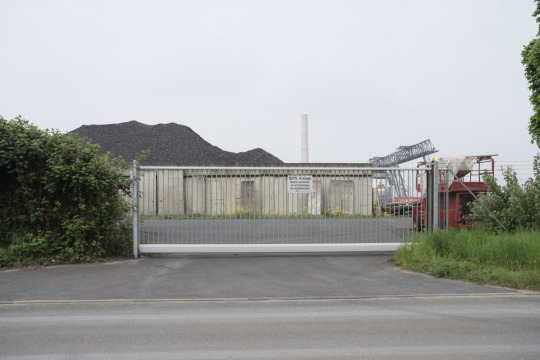
Tata Ronkholz (german photographer, 1940–1997) tribute port district – düsseldorf, germany // 05-2017 © 2017 waidwund-photo
#photographers on tumblr#industrial#industrial gate#tata ronkholz#original photographers#waidwund photo#josch schlegel#traces of human life
36 notes
·
View notes
Text

Altenberger Domstr. 30, Odenthal, Photo by Tata Ronkholz, 1982
68 notes
·
View notes
Photo

Check out Tata Ronkholz, Düsseldorf - Old Port, No. i 6.0 (1981), From Kicken Berlin
0 notes
Text


Tata Ronkholz
2 notes
·
View notes
Photo

Tata Ronkholz, Köln, Umbachstr./Ecke Von-Quadt-Straße (Part of the series “Trinkhallen”). Source
51 notes
·
View notes
Photo

Tata Ronkholz (1940-1997)
Beverage kiosk, Düsseldorf, Hermannstraße 31 1978
(via Art Blart)
12 notes
·
View notes
Photo

Tata Ronkholz (German, 1940-1977) Trinkhalle (Refreshment Stand), Sankt-Franziskusstraße 107 1977
6 notes
·
View notes
Text
NACH BERLIN > CANDIDA HÖFER
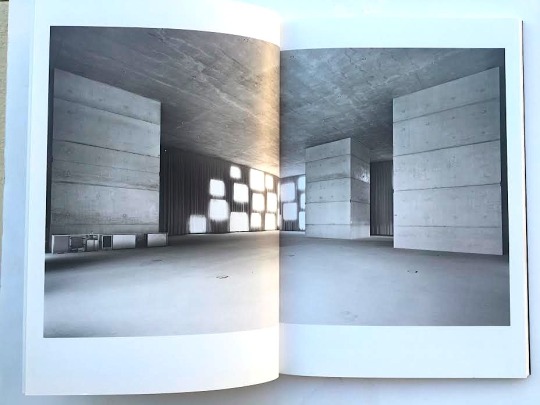
A alemã Candida Höfer é uma fotógrafa conhecida por seu perfeccionismo. Uma virtuose da fotografia com trabalhos categoricamente estabelecidos na arte internacional, notadamente suas imagens de arquitetura expostas de maneira monumental, oriundas de películas de grande formato. Discípula de Benhard "Bernd" Becher (1931-2007) e Hilla Becher (1934-2015) vem catalogando amplos espaços públicos como bibliotecas históricas, importantes museus e outros espaços institucionais, além do seu trabalho seminal de retratos.
Nach Berlin (Verlag der Buchhandlung Walther Köning, 2017) é um pequeno livro que serviu de catálogo para a mostra homônima na Neuer Berliner Kunstverein (n.b.k) * (Nova Berlim Associação de Arte ) de Berlim, Alemanha, em dezembro de 2016 e janeiro de 2017, uma exposição que fugiu do repertório mais conhecido da artista, com trabalhos impressos produzidos em 2015 e 2016, detalhes de interiores, superfícies como pisos de calçadas, paredes, tecidos, entre outros detalhes com grande acutância e uma série de retratos dos anos 1970 e 1980.
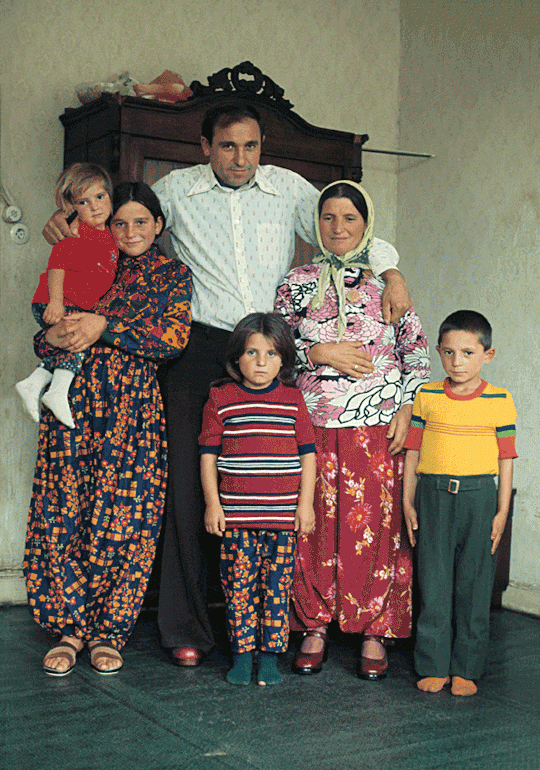
Três projeções, especialmente organizadas para a exposição mostraram fotografias de Candida Höfer em sobreposições. Incluindo sua conhecida série "Türken in Deutschland" (Turcos na Alemanha) de 1979, que traz cenas cotidianas da vida dos "gastbeiter" (turcos que vieram trabalhar na Alemanha após a Segunda Guerra) nas suas casas, lojas, restaurantes em Colônia, Hamburgo e Berlim. Outras duas projeções - Memories 2016 e Berlin 2016 - refletem o escrutínio contínuo da artista sobre locais da vida pública e estruturas de edifícios, bem como, em seus trabalhos mais recentes, sobre a cor, planos e forma na imagem fotográfica.
O título Nach Berlin (para ou após Berlim) é uma citação ao filme Emil und die Detektive (Emil e os Detetives) de 1931, dirigido pelo alemão Milton Rosmer (1881-1971), baseado no livro infantil homônimo escrito pelo alemão Emil Erich Kästner (1899-1974), um grande sucesso e o único livro dele publicado antes da Segunda Guerra a escapar da censura nazista, cujas cenas da cidade atraíram e ainda atraem Candida Höfer. Nas exposição, ela traz uma riqueza das formas encontrada na arquitetura, da visão mais plural e multiforme à concentração nos detalhes que se tornam interessantes abstrações. Poderíamos pensar em uma retomada da artista ao seu trabalho seminal, abordando uma diferente proposta não tão monumental quanto suas obras que lhe trouxeram reconhecimento anterior, ainda que os trabalhos se relacionem entre si.
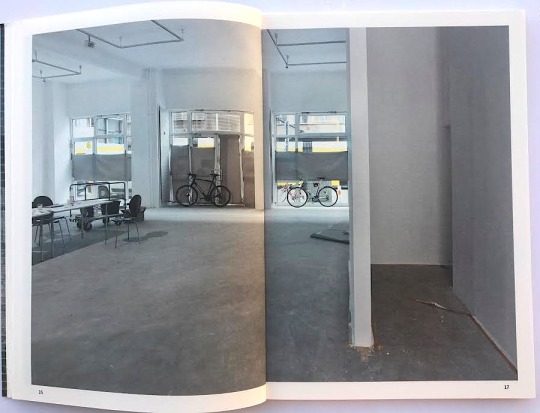
Nascida em Eberswalde em 1944, Candida Höfer cresceu em Colônia, no oeste do país. Seguiu a liturgia do aprendizado fotográfico em estúdios, workshops e cursos até estudar na Academia de Artes de Düsseldorf entre 1976 a 1982, onde foi aluna de Bernd Becher. Na década de 1980 dedicava-se ao registro de cenas cotidianas, como na série "Turcos na Alemanha", representadas no livro. Mas depois disso, seu olhar foi prioritariamente para os interiores da arquitetura onde ela trabalha a geometria com maestria.
Suas fotografias arquitetônicas ganharam espaço no cânone da chamada fotografia conceitual juntamente com as suas imagens das 12 esculturas do francês August Rodin (1840-1917) que compõem sua série Os burgueses de Calais, iniciada em 1884. Em 1997, o décimo segundo e último elenco da série foi lançado em Seul, e a cidade de Calais decidiu encomendar para Candida Höfer uma leitura sobre o assunto. A artista capturou os doze moldes da escultura em museus e praças em Paris, Tóquio, Bruxelas, Londres, Copenhague, Washington, Filadélfia, Basileia, Mariemont / Bélgica, Pasadena, Seul e Calais, trabalho que pode ser visto no belo livro Zwölf-Twelve ( Schirmer-Mosel, 2001).
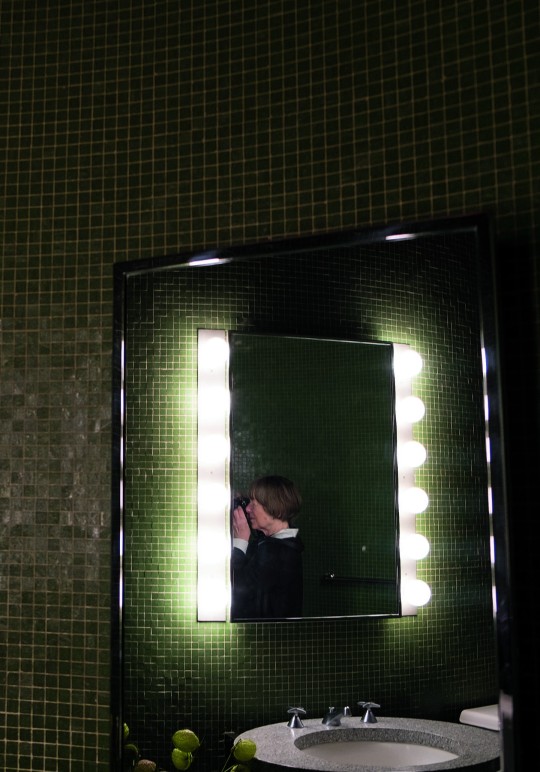
Da primeira geração de estudantes de Bernd Becher, a fotógrafa é considerada -juntamente com Tata Ronkholz (1944-1997), Andreas Gursky, Thomas Ruff, Axel Hütte e Thomas Struth – uma expoente de sua era usando uma nova interpretação contemporânea, uma das representantes da chamada Neue Sachlichkeit (Nova Objetividade) aplicada a fotografia alemã. Uma referência ao movimento homônimo criado nos princípios de 1920 que buscava um certo realismo na pintura como reação ao expressionismo e abstracionismo, considerados elitistas e introspectivos, bem como idealistas e utópicos.
A academia é uma escola que se desenvolveu sob a influência do casal Bernd e Hilla Becher e que se volta para o registro documental, resgatando o apuro formal como o encontrado na obra do húngaro László Moholy-Nagy (1895-1946), cujo nome é uma referência direta à Neue Sachlichkeit juntamente com outros artistas que frequentaram a famosa escola Bauhaus (1919–1933).

Curador e teórico da arte, Marius Babias é diretor da n.b.k. desde 2008, vindo de uma carreira relevante iniciada em 1997 como professor convidado na Städelschule Frankfurt am Main e no Centre for Contemporary Art Kitakyushu, no Japão. Para ele foi um desafio representar no livro o significado das fotografias de Höfer. Uma atitude experimental, na verdade, documentando em imagens e aproveitando as qualidades distintivas da página impressa "como uma cena de apresentação e exibição". O livro contém reproduções das próprias obras fotográficas, algumas tomadas das instalações de vídeo e fotografias, além da instalação e desmontagem da exposição feitas pelo alemão Jens Ziehe, que trabalha sobre a orientação da artista.
Certamente a publicação traz a dificuldade de registrar as imagens projetadas, bem como de equilibrar a escala das fotografias de Candida Höfer devido aos grandes formatos das impressões, algo até mesmo intrínseco aos fotolivros em relação a determinados autores, como Thomas Struth ou Andreas Gursky, seus colegas em Dusseldorf. Embora não seja uma grande antologia da autora que pudesse exigir um formato tão maior, a publicação é cuidadosa, muito bem impressa nos papéis Eurobulk e Munken Linx, pela Medialis, de Berlim, na versão bilíngue alemão e inglês, que acomoda todo material.

Uma das características do trabalho de Höfer são os espaços desabitados, cuja tensão acomoda-se na dicotomia de um lugar vazio que por concepção deveria estar cheio. Há um certo desconforto nessa situação se pensarmos concisamente, mas não é esta a proposta aqui. A autora expõe ao espectador um tour introspectivo e metafísico no preenchimento destes espaços de maneira subjetiva e mais íntima, trazendo seus insights eletivos, baseados nas suas experiências. Deste modo, museus ou bibliotecas de proporções monumentais são preenchidos e habitados pela criatividade do leitor.
Os ambientes escolhidos por Höfer "são todos lugares onde a ordem e a organização exercem um papel importante. E a artista fotografa esses lugares de forma que essa ordem salte aos olhos: linhas horizontais e verticais dominam a imagem, caminhos são traçados, quando possível, em direção ao centro da imagem. Ou então simplificados de tal forma que surja apenas um ou no máximo dois espaços." descreve o crítico suíço Urs Steiner, do diário Neue Zürcher Zeitung, de Zurich.

As fotografias são trabalhadas com iluminação natural, dispensando objetivas multifocais e rigorosamente mantém o mesmo plano da câmera em uma perpectiva de ângulos mais abertos, propondo a visão do leitor para seu ambiente escolhido que é ressaltada pela acutância focal em toda imagem, registrada com uma simplicidade espartana, o que para alguns pode até significar uma certa apatia. Uma linguagem encontrada também nas obras de seus contemporâneos da escola de Dusseldörf, como Gursky, Ruff e Struth. Há, no entanto, uma consistência técnica a impressionar pelo uso do grande formato e da precisão escolhida pela autora em seus recortes.
Acima de tudo a fotógrafa descarta os maneirismos mais clichês encontrados na produção com pretenção mais conceitual, o que de eventualmente desconserta aqueles que buscam copiá-la. Suas composições tem caráter equilibrado entre as linhas geométricas e o uso da cor como forma, concluindo assim uma ampla significância se pensarmos filosoficamente no sentido de criar uma configuração inteligível para o espectador, desempenhando assim sua função gramática que alcança o espaço fotografado, seja como um todo, seja pelos seus detalhes. Em 2003 seu trabalho juntamente com o do artista Martin Kippenberger (1953-1997) representaram a Alemanha na Bienal de Veneza. Uma das descrições alcançadas é que suas imagens traziam uma precisão como uma pintura antiga diante do estabelecimento das proporções rígidas.

Nach Berlin traz também as 80 imagens feitas no final dos anos 1970 e anos 1980 que foram projetadas durante a mostra, uma espécie de documentário social sobre os trabalhadores migrantes (Gastarbeiter) que diferem diametralmente do trabalho posterior mais rigoroso, através de uma representação mais despojada, quase jornalística ligada a um perfil da street photography. Para a crítica de arte americana Siona Wilson, professora da College Staten Island de Nova York e pesquisadora da arte contemporânea do pós-guerra, essa imagem de rua, mais descontraída, acaba revelando um humor irônico quando conectadas com os desalinhados papéis de paredes encontrados nas grandes imagens dos interiores dos edifícios.
Wilson vai além na ressignificação deste trabalho: "Não se pode deixar de ler este projeto de mais de 30 anos através das lentes do presente, e estamos claramente destinados a fazê-lo. A total falta de identificadores religiosos e sinalização em dois idiomas nas lojas atesta um compromisso anterior com a assimilação na Alemanha, que agora diminuiu significativamente. Mas não vemos nenhum indício das razões complexas e contestadas para isso nas recentes vistas digitais das ruas das calçadas maravilhosamente manchadas da Berlim contemporânea."
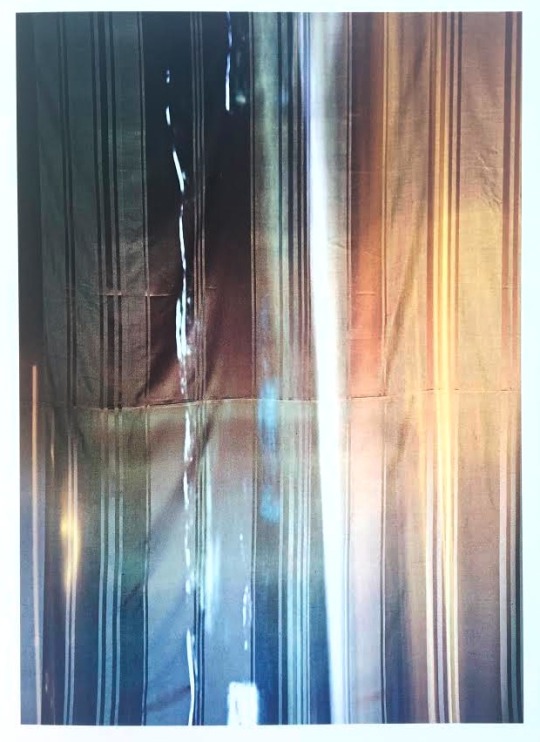
Para Marius Babias, curador da exposição e organizador do livro, os detalhes das paredes, os padrões de fabricação popular, encontrados na decoração fotografada e a alternância entre a imagem na parede da galeria e aquelas projetadas sugerem a multiplicidade de perspectivas que podemos encontrar na obra da Höfer. O título, que faz a analogia a um dos filmes favoritos da fotógrafa, cumpre uma função, diz o curador, ao referir-se às expectativas dos visitantes da exposição. Ela deliberadamente pode desapontar, por omitir seus trabalhos icônicos, como as fotografias das bibliotecas. Mas, as imagens nos convidam a experimentar uma mudança na visão criativa envolvente de Höfer - da rica variedade formal às formas básicas, de um todo multifacetado à concentração em um detalhe abstrato, seja nas imagens estáticas ou naquelas projetadas.
O livro é estruturado para refazer o percurso da exposição, desde a colocação dos quadros em paredes basculantes, a disposição das fotografias, displays de vidro para exposição de livros. A arquitetura da mostra foi de Höfer com parceria da fotógrafa sérvia Milica Lopičić e o projeto gráfico do alemão Knut Wiese, também em colaboração com a autora. Como resume o curador, "as páginas do livro oferecem uma ilustração convincente do significado inabalável da obra de Candida Höfer na era digital: o mundo interior das imagens, dividido em seus componentes - materialidade e percepção visual.

A apresentação em um livro, escreve o alemão Herbert Burket, como todas as outras formas de apresentação de obras de arte, é "guiar o olhar do espectador" como o arquiteto Gottfried Boehm bem argumenta no livro Zeigen: die Rhetorik des Sichtbaren ( Fink, 2010) [ A retórica do visível). Ainda assim, de todas as formas de exibição, a apresentação no livro parece ter o maior potencial para essa orientação.
"O livro parece oferecer aos artistas uma maneira de recuperar o controle sobre o olhar. Ao transpor as imagens de sua exposição em imagens de uma exposição de um livro, Höfer determina a sequência em que elas são vistas. Ela cria justaposições. Restringe o olhar para a página aberta de uma só vez e estabelece novas dimensões relativas, independentemente do espaço ao redor. Ela pede ao leitor que olhe para o livro e o convida a tocá-lo. Ainda assim, o livro é um objeto e, como objeto, questiona se os artistas podem recuperar essa autoridade determinante. Um livro também é uma entrega, uma perda de controle. Não apenas não há como dizer onde o livro vai terminar, mas também resta uma questão em aberto sobre como ele será lido." continua Burket.
Imagens © Candida Höfer Texto © Juan Esteves

*Neuer Berliner Kunstverein (n.b.k.) é um espaço de arte contemporânea. Foi criado em 1969 com o objetivo de apresentar as belas artes contemporâneas a um público mais amplo e convidar esse público a participar ativamente dos processos culturais.
Em 1970, a n.b.k. fundou um dos primeiros “Artotheken” da Alemanha onde os entusiastas da arte podem ver obras de arte internacionais do século XX e do século XXI gratuitamente. A coleção é composta de pinturas, esculturas, aquarelas, colagens, guaches, desenhos, gravuras e fotografias; compreende mais de 4.000 obras. Artothek mobil cria exposições para instituições públicas, escolas e empresas.
O Video-Forum, n.b.k. fornece uma coleção de mais de 1.700 obras internacionais de videoarte ao público. Desde a criação da coleção, em 1971, ela foi ampliada constantemente por meio de coproduções e novas compras. As participações do fórum de vídeo podem ser assistidas em um espaço separado. Apresentações e exibições baseadas na coleção apresentam os desenvolvimentos atuais e históricos da videoarte ao público e os colocam em discussão. Ambas as coleções - Artothek e Video-Forum - são abertas ao público em geral e representam espaços de ensino de arte experimental, bem como de educação cultural.
**Agradecimentos especiais a Kattia Basile
#Nestes tempos bicudos de pandemia e irresponsabilidade política com a cultura vamos apoiar artistas, pesquisadores, editoras, gráficas e toda nossa cultura. A contribuição deles é essencial para além da nossa existência e conforto doméstico nesta quarentena #
7 notes
·
View notes
Text
3. Mai 2017 Frankfurt am Main
FOTOGRAFIEN WERDEN BILDER @ STÄDELMUSEUM bis 13. August 2017
Die Becher-Klasse Volker Döhne, Andreas Gursky, Candida Höfer, Axel Hütte, Tata Ronkholz, Thomas Ruff, Jörg Sasse, Thomas Struth und Petra Wunderlich!




#staedelmuseum#frankfurt#becher#fotografien#photography#art exhibition#andreas gursky#thomas struth#thomas ruff#candida höfer#axel hütte#volker döhne#jeff koons#tata ronkholz#jörg sasse#petra wunderlich#portrait#architecture#bernd becher#hilla becher
0 notes
Text
DÜSSELDORF PHOTO PLUS

Das renommierte Düsseldorf Photo Weekend und Düsseldorf Photo sind Vergangenheit – 2020 erfolgt der Neustart mit düsseldorf photo+. Die vitale Festival – Atmosphäre des Duesseldorf Photo Weekend, organisiert von der Galeristin Clara Maria Sels. ist noch deutlich in Erinnerung - in diesem Jahr wird die zentrale Organisation und Konzeptarbeit von fünf Düsseldorfer*innen in ehrenamtlicher Form geleistet, dies sind die Künstlerinnen Christine Erhard und Pola Sieverding, die Galeristen Rupert Pfab und Thomas Rieger (Konrad Fischer-Galerie) sowie der Journalist Carl Friedrich Schröer. Erneut zeigen namhafte Düsseldorfer Galerien und Kunstintitute hervorragende Kunst aus den Sparten Photographie und weiteren visuellen Medien. In Düsseldorf, an der Kunstakademie hat das Wirken der Fotokünstler*innen Bernd und Hilla Becher Fotogeschichte geschrieben, durch ihre Professur an der Kunstakademie der Landeshauptstadt ab 1976 entwickelten sich fotografische Künstler*innenpositionen wie Andreas Gursky, Tata Ronkholz, Candida Höfer, Axel Hütte oder Thomas Struth zu internationaler Bedeutung. Die rheinische Fotokunstszene bietet noch Einiges mehr: Überraschungen und Entdecker*innenfreude sind vorprogrammiert. düsseldorf photo+ versteht sich als konstruktiver Impuls für die zukünftige düsseldorf biennial for visual and sonic media, die ab 2022 stattfinden soll. In rund 60 Galerien, Off-Spaces, Stiftungen, Museen und weiteren Institutionen werden Ausstellungen und Panels zu Fotografie, Sound und zeitbasierten Medien veranstaltet: Nrw-Forum, Kunstpalast u.v.w. Laufzeit: 13.3.–8.5.2020. Gemeinsame Eröffnung am Freitag 13.3., 18–21 Uhr. Öffnungszeiten Opening Weekend: Samstag 14.3.: 12–18 Uhr; Sonntag 15.3.: 12–16 Uhr. Ausstellungen, Ausstellungsorte und Laufzeiten: www.duesseldorfphotoplus.de/ausstellungen Image Credits and Copyrights: (Bild 1) Jim Dow (*1942), Zummo's Super Market, Airline Highway, Metairie, Louisiana, 1979, Chromogener Farbabzug 19,5 x 24,6 cm, Kunstpalast, Düsseldorf, © Jim Dow: Janet Borden, Inc. Brooklyn, New York; (Bild 2) Foto: Blick auf "Uwe" von Heinrich Riebesehl (1938–2010), Uwe, 13.6.1967 (aus der Serie „Gesichter“, 1967-1969 ), aus dem Portfolio 10 Photographien 1967- 1982, hg. von der Galerie Kicken, 2005, Silbergelatineabzug, 34 x 30,5 cm, Kunstpalast, Düsseldorf, © VG Bild-Kunst, Bonn 2020, Ausstellung Sichtweisen. Die neue Sammlung Fotografie, Kunstpalast, Düsseldorf, Foto: Anne Orthen; (Bild 3) Thomas Ruff, L’Empereur_06, 1982. Aus der Serie: L’Empereur, Photo Thomas Ruff / VG Bildkunst, Bonn 2020, (Bild 4) Rafał Milach, from the The First March of Gentlemen series, 2017, Photo Rafał Milach 2017 und Jednostka Gallery Read the full article
#duesseldorfphotoplus#Düsseldorf#FOTOGRAFIE#Kunstpalast#NrwForum#photoandmediaart#PhotoArt#Photography
0 notes
Link
Sehenswertes Klassentreffen: Mit einer großangelegten #Fotoausstellung widmet sich das Städel Museum in Frankfurt bis zum 13. August 2017 der sogenannten Becher-Klasse und dem mit ihr verbundenen Paradigmenwechsel im Medium der Fotografie. Gezeigt werden rund 200 Werke von Volker Döhne, Andreas Gursky, Candida Höfer, Axel Hütte, Tata Ronkholz, Thomas Ruff, Jörg Sasse, Thomas Struth und Petra Wunderlich - allesamt ehemalige Studenten von Bernd und Hilla Becher an der Düsseldorfer Kunstakademie.
2 notes
·
View notes
Link
Artist: Candida Höfer
Venue: Kukje Gallery, Seoul
Exhibition Title: Spaces of Enlightenment
Date: July 26 – August 26, 2018
Click here to view slideshow
Full gallery of images, press release and link available after the jump.
Images:
Images courtesy of the artist and Kukje Gallery, Seoul
Press Release:
Kukje Gallery is pleased to announce Spaces of Enlightenment, a solo exhibition of the internationally celebrated artist Candida Höfer. Installed in Kukje Gallery’s K2 space, the exhibition will mark Höfer’s fourth show at the gallery and will include works reflecting her ongoing interest in people and spaces. The selected works in the show, ranging from the late 1990s to the present, focus on unique architectural interiors located in major private and public institutions around the world including theaters, opera houses, libraries, and museums.
The interiors featured in her photographs include a diverse range of periods and geographies, but each share a common historical function as places designed to assist in “enlightenment.” Primarily known as an intellectual and philosophical movement in Europe during the eighteenth century, the “Enlightenment” was defined by its focus on learning, scientific observation and the pursuit of reason. The ideals of the enlightenment, which have profoundly impacted all aspects of modern society including politics, literature, architecture, and art, begin with this emphasis on human reasoning. More broadly, the concept of “enlightenment” can be understood in a religious context: i.e., Buddhism’s concept of “sudden enlightenment” as well as the symbol of an actual light source often depicted in Christian iconography. What links these references is the idea that a state of enlightenment, or “awakening,” is achieved not only through the accumulation of knowledge but also by a change in perception. It is within this context that Höfer engages her subject, presenting these social spaces as places that facilitate human reasoning and intellectual advancement.
The first floor of the K2 space showcases works that capture the interior spaces of theaters and opera houses in Germany, Italy, Portugal, and Argentina. Beginning with the iconic Düsseldorfer Schauspielhaus, Höfer’s images allow the audience to read into the specific architectural characteristics, along with their historical context. This can be seen in the Teatro di Villa Aldrovandi Mazzacorati, Bologna, a private theater built on the land of an aristocratic family as well as in the Teatro Olimpico Vicenza, a building in which tricks of perspective were used to create an illusion of greater space. Another of Höfer’s subjects, the Teatro Comunale di Bologna, was one of the first municipal theaters in Italy inaugurated with public funds. The theater as a shared venue highlights a series of historical developments leading to the establishment and use of public spaces, marking the expansion of spectatorship with the rise of the middle class during the Age of Enlightenment. These social changes then led to the establishment of civic institutions and the popularization of the kind of performance arts that were previously limited to the aristocracy. Looking closely at Höfer’s images, we can read these transformations in the architectural designs, interpreting changes as reflecting shifts in class structure. For example, the box seats originally designed for the nobility and the parterre section (today known as the “stalls”) designed for the middle class, evolved to include the introduction of seats in the latter and ultimately to the elimination of such strict hierarchical separation in public.
The second floor of the K2 space introduces the interior spaces found in libraries and museums, places focused on the pursuit of learning and aesthetics. Höfer pays particular attention to the Baroque libraries housed in monasteries from the Middle Ages, the National Library of France (Bibliothèque nationale de France), a small bookshelf situated in the hallway of the Kunstakademie Düsseldorf, Villa Borghese, the State Hermitage Museum, and the Julia Stoschek Collection; all of these spaces embody each of their evolving function over time. Together with the collection of books, objects, artworks, wall paintings, and furniture, these sites have cultivated their social and historical status, for which they are recognized today. Since their founding, these spaces have been transformed from being reserved only for the privileged to opening their doors to a democratic public. It is in these locations that untold numbers of artists, historians, and philosophers interacted with the public, bringing about changes in cognition and understanding, inspiring creativity and the subsequent birth of great art. Candida Höfer channels this complex accumulation of cultural and artistic influences, capturing the dynamic energies that remain embedded in their spaces.
The spaces in Candida Höfer’s photography quietly hint at how human presence remains embedded in a space, even when unoccupied. In the series most often classified as her early works, including Liverpool (1968), Höfer chronicles the many faces of the city; in Flipper (1973), she captures spaces with pinball machines throughout Europe. The photographic series Turks in Germany and Turks in Turkey, developed throughout the late 1970s, portray Turkish communities in Germany and Turkey respectively, framing the artist’s foundational interest in the physical and social interactions between spaces and human beings. Beginning in the 1980s, Höfer turned her attention towards “public spaces” such as zoos, art and natural history museums, and libraries, documenting the locations and consequence of human cultural activities. The artist captures these organic relationships between spaces and people, subjects and geographical, spatial environments in her viewfinder. The gradual absence of people in her images came naturally during this process, as the artist came to believe that since a space inherently functions with the aid of people, it is unnecessary to prove its existence by including people in the photographs.
The majority of Candida Höfer’s early works were photographed with a 35mm (compact; handheld) camera, with the exception of when her professor Bernd Becher at the Kunstakademie Düsseldorf recommended a large plate camera. In the late 1990s, Höfer’s transition to using a tripod, a 6x6cm and subsequently a 9x12cm format eventually made large-scale prints possible, further highlighting the pristine structural arrangements and spatial organization captured in her work. This transition allows her audience to slowly absorb the minute details that pervade the space in each image, and recognize that many, if not all, of these distinct components of each venue not only act as distinct man-made symbols, but also as elements that constitute the social space.
Candida Höfer works solely with the natural light and artificial illumination that suffuse each venue within a given time period—refraining from using any additional lighting equipment. The artist peruses each location and establishes her point of view before taking her images; what follows is a careful process of editing and the selection of multiple prints prior to settling on a final product. Each title bears the name of the location, institution, and year of the shoot, and the order of production in Roman numerals should multiple photographs be produced from the same venue. Keeping her interference during the process to a minimum, Höfer places margins between the image and frame, effectively constructing a divide between the space of the viewer and the space that exists behind the glass while simultaneously connecting the two spaces. Such artistic decisions induce her audiences to encounter a portrait of space that is imbued with the vestiges of people, time, and history.
Candida Höfer was born in 1944 in Eberswalde, Germany, a town situated northeast of Berlin. Having expressed interest in photography during childhood, Höfer first began her career at the age of nineteen as an apprentice at a photography atelier that dealt with advertisements, architecture, and fashion. She entered the Kölner Werkschulen (Cologne Academy of Fine and Applied Arts) in 1964 and studied art and photography, and worked as a freelance photographer upon graduation. She later attended the Kunstakademie Düsseldorf, one of the most influential European educational institutions at the time in 1973, where she initially studied film under Ole John. In 1976 she was accepted into Bernd Becher’s first photography class, studying alongside contemporaries Axel Hütte (1976 – 1981), Thomas Struth (1976 –1980), Thomas Ruff (1978 – 1985), Tata Ronkholz (1978 – 1985), Petra Wunderlich (1985 – 1988), and Andreas Gursky (1981 – 1987)—later collectively referred to as the first generation of the “Becher class.” Having already been the subject of gallery exhibitions in the late 1970s, Candida Höfer has spent decades expanding and redefining the boundaries of her practice. She not only photographs the interior spaces of public venues, but also conducts serial projects with specific subjects such as On Kawara’s Date Paintings and the twelve casts of Auguste Rodin’s The Burghers of Calais, documenting how they are placed in their respective collections, along with photographing the interiors and exteriors of the architectural feats of Herzog & de Meuron.
Widely exhibited around the world through innumerable solo and group exhibitions, Candida Höfer’s works have been shown at documenta11 (2002) in Kassel, Germany, as well as having represented Germany alongside Martin Kippenberger at the national pavilion of the 50th edition of La Biennale di Venezia (2003) in Italy. Höfer was the recipient of the Outstanding Contribution to Photography award by the Sony World Photography Awards in April of 2018. Her works can be found in major collections including the Museum of Modern Art in New York, the Centre Pompidou in Paris, the Bibliothèque nationale de France, the Museum Ludwig in Cologne, the Moderna Museet in Stockholm, the Museo Centro de Arte Reina Sofia in Madrid, Museo Guggenheim Bilbao, the National Museum of Modern and Contemporary Art in Seoul, the Rubell Family Collection in Miami, and the Friedrich Christian Flick Foundation in Zürich. Candida Höfer currently resides and practices in Cologne.
Link: Candida Höfer at Kukje Gallery
Contemporary Art Daily is produced by Contemporary Art Group, a not-for-profit organization. We rely on our audience to help fund the publication of exhibitions that show up in this RSS feed. Please consider supporting us by making a donation today.
from Contemporary Art Daily http://bit.ly/2PEGbNZ
0 notes
Text

Hermann-Albertz-Str. 60, Oberhausen, Photo by Tata Ronkholz, 1978
51 notes
·
View notes
Text

Tata Ronkholz
4 notes
·
View notes
Photo

Tata Ronkholz. Trinkhalle (Krefeld, Lessingstrasse 1), 1978. Source
38 notes
·
View notes
Photo

Tata Ronkholz (1940-1997)
Without title 1978
(via Art Blart)
7 notes
·
View notes